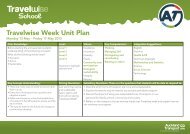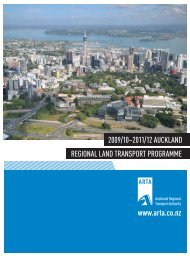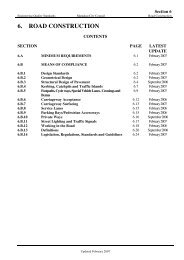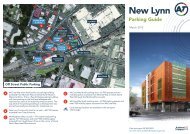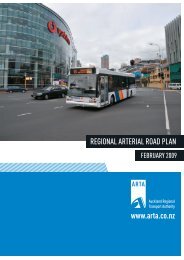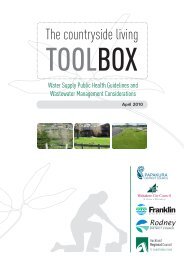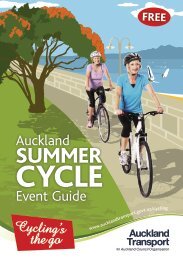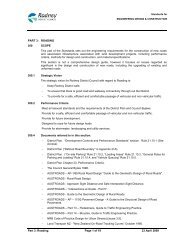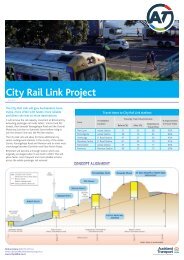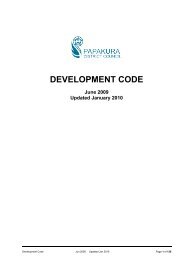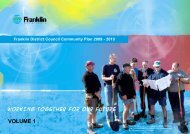The ARTA Years 2004 â 2010 - Auckland Transport
The ARTA Years 2004 â 2010 - Auckland Transport
The ARTA Years 2004 â 2010 - Auckland Transport
Create successful ePaper yourself
Turn your PDF publications into a flip-book with our unique Google optimized e-Paper software.
Workplace travel plans<br />
Vodafone NZ and <strong>Auckland</strong> Airport are two examples of the success of workplace travel plans in promoting more<br />
sustainable travel. Vodafone NZ was one of the first organisations to begin a plan, early in <strong>2004</strong>. Needing to relocate their<br />
1,100 staff, they worked closely with <strong>ARTA</strong> on an i-commute programme to promote the use of public transport, walking<br />
and cycling. While the company has benefited from a reduced need for car parking, the major benefits to the wider<br />
community by 2006 were:<br />
q Reduced congestion, saving other road users $64,000<br />
q<br />
Fewer road crashes, valued at $21,000 per year<br />
q Environmental and health benefits, valued at $45,000.<br />
In 2006, <strong>Auckland</strong> Airport developed its Lift programme with input from <strong>ARTA</strong>. Promoting car pooling and use of public<br />
transport to over 12,000 staff, the programme now has 23 companies in the airport vicinity as members. In just two years<br />
it had taken 840 cars off the road each month, reducing CO 2 emissions by at least 68 tonnes per year.<br />
Results: Ten workplaces have now completed and evaluated travel plans, and collectively have achieved a reduction of<br />
788 car trips to work each morning peak. This reduction in car trips corresponds to 4.5 million fewer kilometres travelled,<br />
and a CO 2 reduction of 1,469 tonnes.<br />
Progress on accessible public transport<br />
Both national and regional transport strategies require local authorities to consider the needs of transport<br />
disadvantaged people and to provide services to meet those needs. <strong>ARTA</strong> has been proactively working to improve<br />
accessibility for communities and groups whose needs are not met by the regular public transport system. <strong>The</strong>se groups<br />
are primarily children, senior citizens and disabled people.<br />
<strong>ARTA</strong> has established a <strong>Transport</strong> Disability Advisory Group (TDAG) that provides guidance, advice and clear direction to<br />
<strong>ARTA</strong>, councils and key stakeholders with the aim of increasing access to transport services for disabled people. We work<br />
closely with bus, train and ferry operators and with<br />
KiwiRail and local councils to achieve improvements to<br />
existing and new infrastructure, services, information<br />
about services and staff training. We also administer<br />
the Total Mobility (TM) scheme for taxi and hoist vehicle<br />
transport. <strong>The</strong> <strong>Auckland</strong> Regional Public <strong>Transport</strong><br />
Plan <strong>2010</strong> contains new policies and actions for<br />
transport disadvantaged <strong>Auckland</strong>ers that build on the<br />
progress to date, and a number of improvements to<br />
the Total Mobility scheme are due to be implemented<br />
in October this year.<br />
<strong>The</strong> old Grafton Bridge (right) has become a<br />
key element of the Central Connector route<br />
that links to the new Grafton Station.<br />
21



